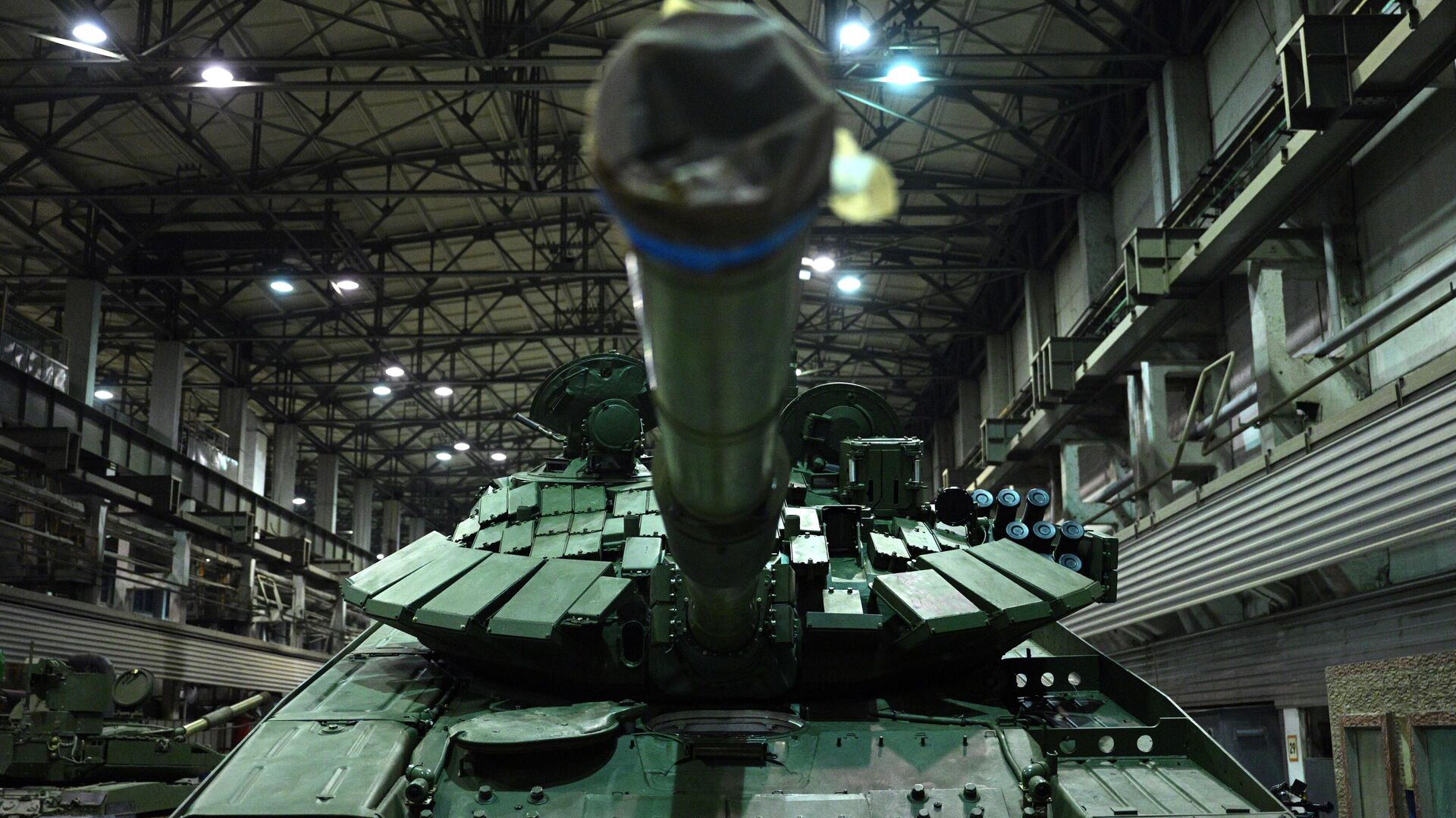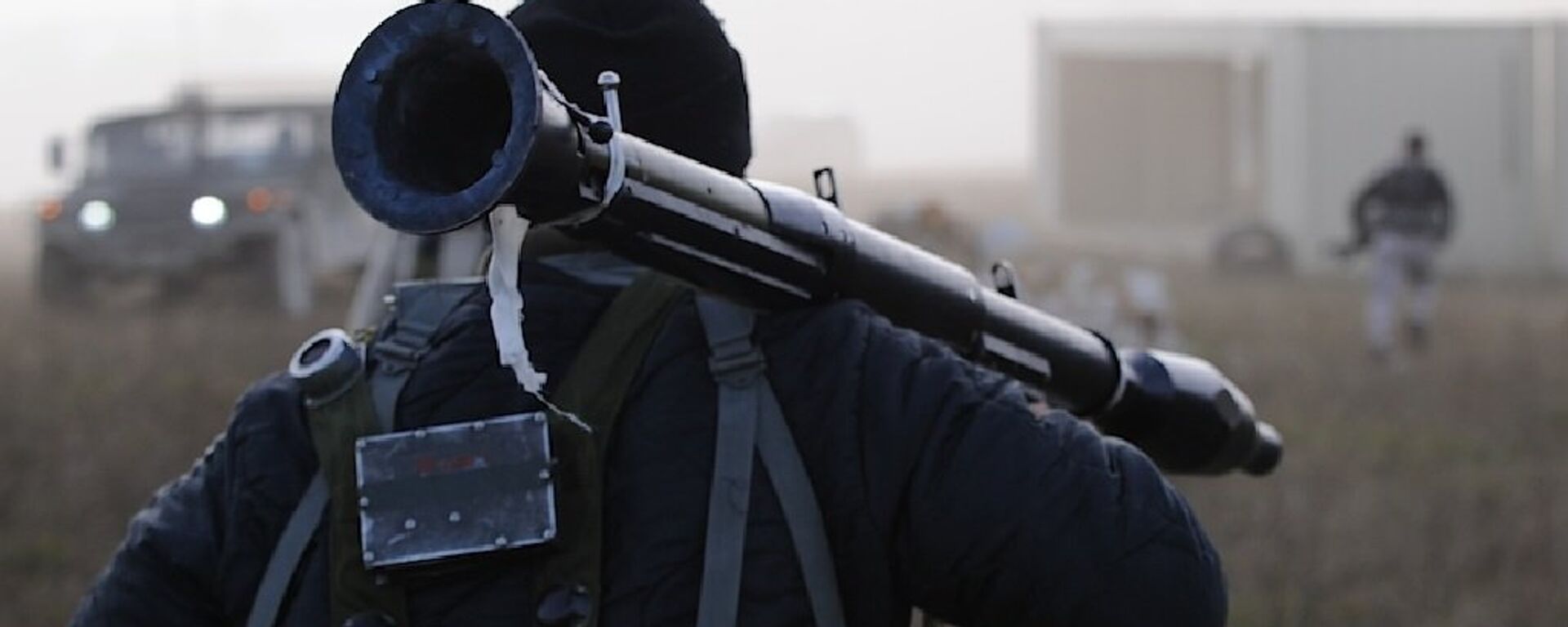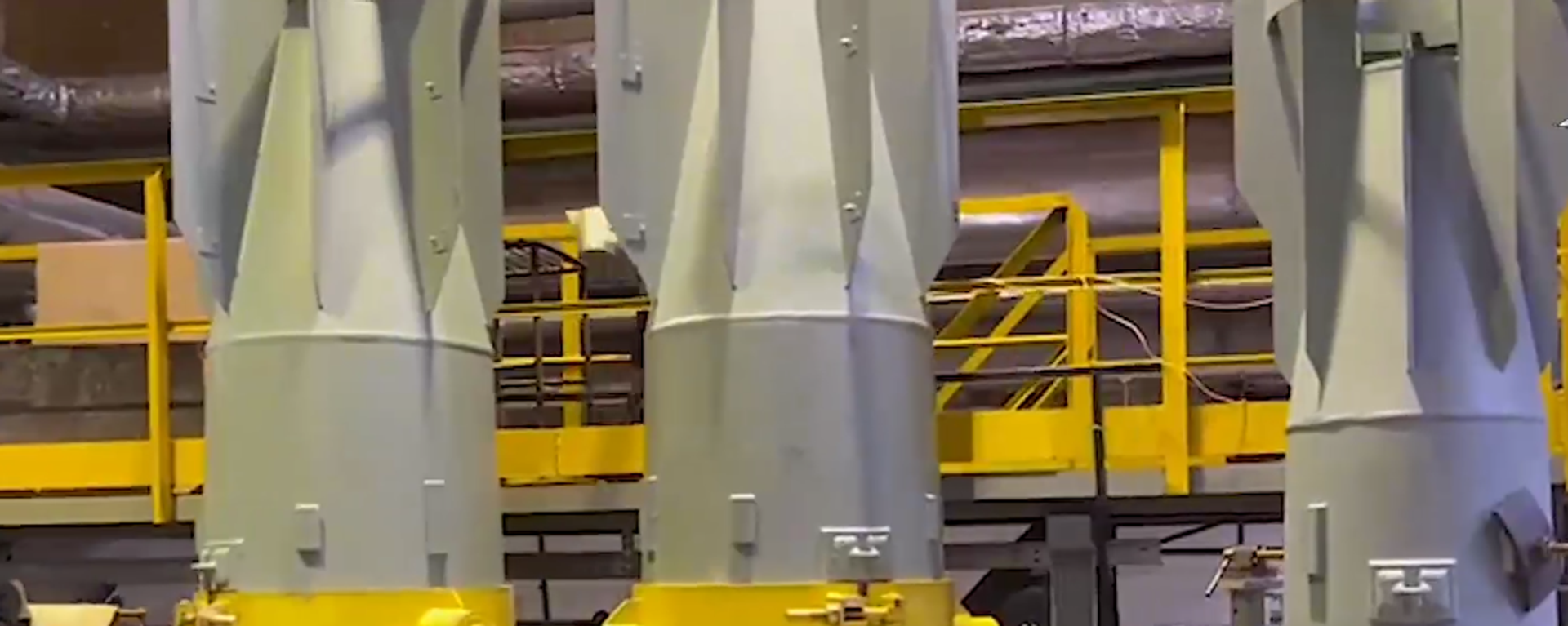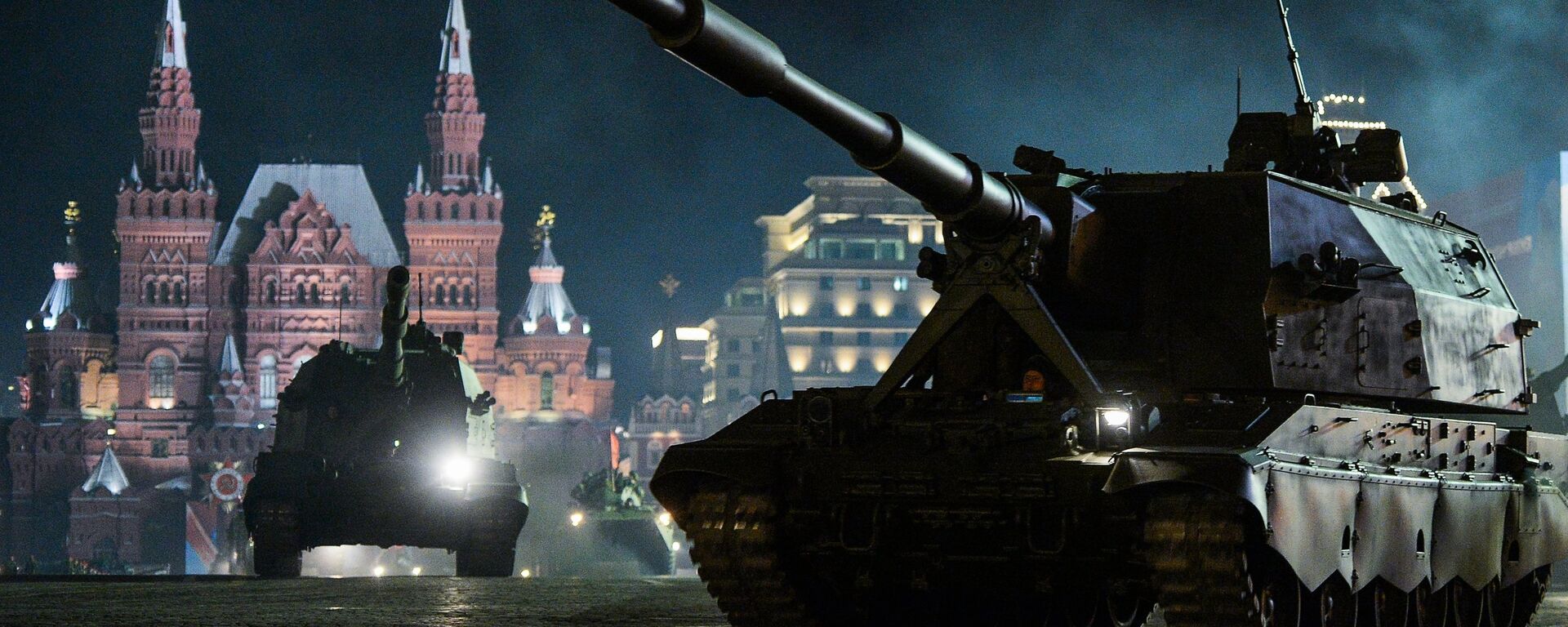Melding Old Steel With New Tech: How Russia Was Able to ‘Reconstitute’ Its Army So Quickly
19:15 GMT 04.04.2024 (Updated: 19:33 GMT 04.04.2024)

© Sputnik / Ramil Sitdikov
/ Subscribe
A senior US State Department official has pointed to the alarming rate at which Russia’s military was able to “reconstitute” itself after the opening stages of the NATO-sponsored proxy war in Ukraine, fatally undermining Pentagon chief Lloyd Austin’s hopes that the Ukrainian crisis would permanently “weaken” Russia militarily.
The pace at which the Russian military has been able to rearm and revamp over the course of the conflict in Ukraine has surprised Deputy Secretary of State Kurt Campbell.
“We have assessed over the course of the last couple of months that Russia has almost completely reconstituted militarily, and after the initial setbacks on the battlefield delivered to them by a brave and hardy group in Ukraine…Russia has retooled and now poses a threat to Ukraine as we are struggling to get the supplemental, but not just to Ukraine,” Campbell said Wednesday at an event hosted by the Center for a New American Century, a neoconservative DC think tank.
Accusing Russia’s allies and partners, particularly China, of helping Moscow in its efforts, Campbell went on to critique the current state of the US military-industrial complex, suggesting that the cutbacks and consolidations of the 1990s have left Washington’s global ambitions vulnerable to harsh realities.
“I think what we have seen is that the urgent security demands in Europe and the Indo-Pacific require much more rapid ability to deliver both ordinance and other capabilities. We’ve run into challenges associated with the delivery of even the most basic equipment necessary to support both the circumstances in Ukraine but also just making sure that American defense stocks are kept whole,” Campbell said.
The official's recommendation? That “more money” be thrown into defense both by the US and allied countries to deal with issues ranging from choked supply chains to backlogs and bottlenecks which “have plagued a number of programs” in the defense realm.
What Made Russia's Rapid Resurgence Possible?
Campbell’s surprise is related to the fact that he’s taken into account only the experience of the Ukrainian conflict, and not the whole recent history of the development of Russia’s military, weaponry, and defense sector, veteran Russian journalist and military observer Alexei Borzenko told Sputnik.
“We had a very strong military during the Soviet period. A large number of developments were created then which were not developed in the 1990s, when we believed we wouldn’t have to fight anyone, when we thought the West was our friend and that Western weapons would not be used against us,” Borzenko said.
Taking the tank forces as an example, the observer pointed to the vast stocks of armor Russia received thanks to the efforts of Soviet General Secretary Leonid Brezhnev, who, as a veteran of the Great Patriotic War, had instructed the defense industry to produce vast quantities of tanks and armored personnel carriers which Russia inherited and stored in a mothballed condition.
Over the course of the special military operation, these 70s-vintage tank designs have been reactivated and restored, upgraded with the latest-available armor, communications gear and weaponry, and sent to the front.
“And when it comes to producing new tanks, we also have certain reserves of modern MBTs,” Borzenko added, pointing to examples like the T-80 and the T-90, and to the “fusion of scientific thought of the 70s and 80s, which our engineers have combined with modern electronics and modifications for the current conditions of war.”
The Ukrainian crisis has proven Russian tanks’ status as the best in the world, according to Borzenko, who pointed out that NATO’s heavy, high-tech armor like the Abrams and Leopard 2 are inferior, including in their mobility characteristics in the snow and mud-soaked steppes of Ukraine.
“Tank protection systems are being created, electronic warfare systems are being created, satellite tracking systems are being created. You can see that many military satellites have been launched recently,” Borzenko said.
The same goes for Russia’s arsenal of heavy air-dropped FAB, KAB and ODAB series bombs, which have been equipped with a new ‘Universal Planning and Correction Module’, turning 70s and 80s vintage ‘dumb’ munitions into modern wing and rudder-quipped, laser and satellite-guided 'smart', glide-assisted standoff weapons.
“We have applied new technologies which have in effect merged with old technologies,” Borzenko explained, noting that the guidance and wing kits have given the weapons “an impact accuracy of plus/minus 10 meters – which is nothing for a munition with such a large destructive impact.”
In the field of missiles and missile and air defenses too, the conflict has given Russia’s developers the chance to prove both existing missile tech and the hypersonic weapon designs – whose development began in the 1970s and 1980s, and which were deployed in the late 2010s thanks to advances in electronics, against top Western missile defense capabilities, including the Patriot. On the defensive side, Borzenko cited the Pantsir missile and anti-air artillery system, as well as the S-300 and S-400, as examples of technologies for which Western powers have no true analog.
If anything, Borzenko says, Kurt Campbell’s argument that the Russian military has “recovered” over the course of the special military operation “is not entirely correct,” since Russia’s military is “stronger than they really think.” It is impossible to “show them everything” in Ukraine, where far from all of Russia’s capabilities have been deployed – strategic hypersonic weapons and nuclear missile-firing submarines being examples.
“Hypersonic missiles have effectively closed the door on the technologies behind American aircraft carriers. In other words, at a certain moment it’s possible to simply destroy all of them, if necessary, with these missiles. That is, the scientific direction of the development of aircraft carrier groups has become a dead end with the advent of hypersonic missiles which only we have today,” the observer explained.
The new S-500 air and missile defense and its ability to defend against capabilities deployed in space is another illustration, Borzenko noted – with the system capable of destroying even enemy satellites, but similarly not deployed in the Ukrainian proxy war to date.
Flawed Assumptions
The problem for officials in Washington is their assumption at the beginning of the conflict that Russia would “very quickly deplete our defense-industrial complex, and the budget in general, thanks to the introduction of strict sanctions,” says veteran Moscow-based military expert Alexei Leonkov.
In reality, Leonkov told Sputnik, Russia was preparing ahead of time through the partial modernization of its defense industry, including via the introduction of new automatic production and assembly lines, and was able to create new types of equipment taking account of experience gained during the Syrian conflict.
“Therefore, when the West put pressure on us with all of its economic might and began to spoil our military-technical cooperation, thinking this would hit our defense-industrial complex very hard, it miscalculated. We not only withstood this sanctions policy, but were able to mobilize and increase production, with the defense-industrial complex put on a war footing by the summer of 2022,” Leonkov explained.
On top of that, the observer noted, the Russian government formed a special defense commission designed to cut through bureaucratic red tape to resolve urgent problems related to the production of weapons and military equipment, with drones serving as an important example of a field where Russia had traditionally lagged behind the West and but was able to quickly catch up thanks to timely shifts in policy.
“Before the special military operation we did not have so many drones – about 1,000 pieces. Now, 1,000 units is roughly the standard consumption per month, and this is counting only large drones, not small quadcopters,” Leonkov said.
“Enterprises of the military-industrial complex began working in three shifts, as did design bureaus, dealing with issues related to the modernization of equipment and the introduction of new models on the battlefield. And this is work which ended up breaking the military machine of NATO countries, who thought they could starve us out and generally undermine our entire military economic and military-industrial enterprise sector thanks to sanctions. We have won these unseen battles, and it is the West which now has problems with the production of military equipment and weapons,” Leonkov noted.
Russia’s defense sector has made dramatic strikes in air defenses, electronic warfare, counter-battery systems, new multiple launch rocket systems, and tactical equipment such as FPV drones, which along with military-grade loitering and reconnaissance UAVs have appeared virtually from scratch, according to the expert.
Pointing to work that remains to be done, Leonkov noted that Russia’s defense sector has “not yet found a solution to the fight against unmanned boats, and we are still solving the problem of completely blocking the penetration of long-range aircraft-type drones flying into our territory for terror-bombing purposes. Work is continuing,” the observer summed up.







